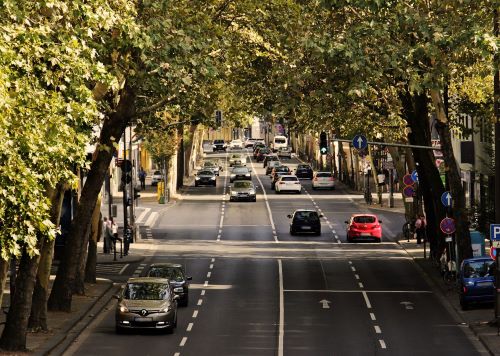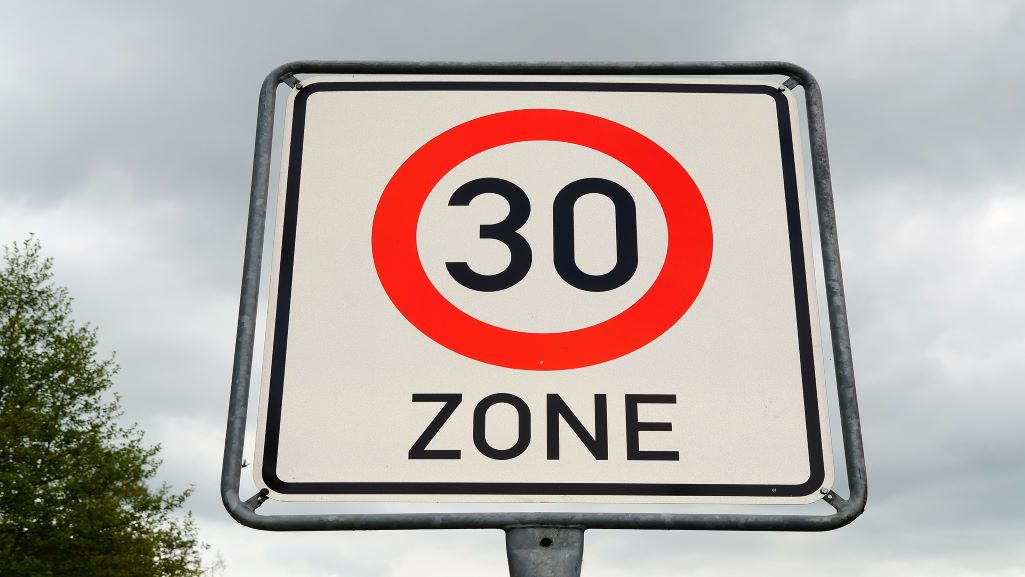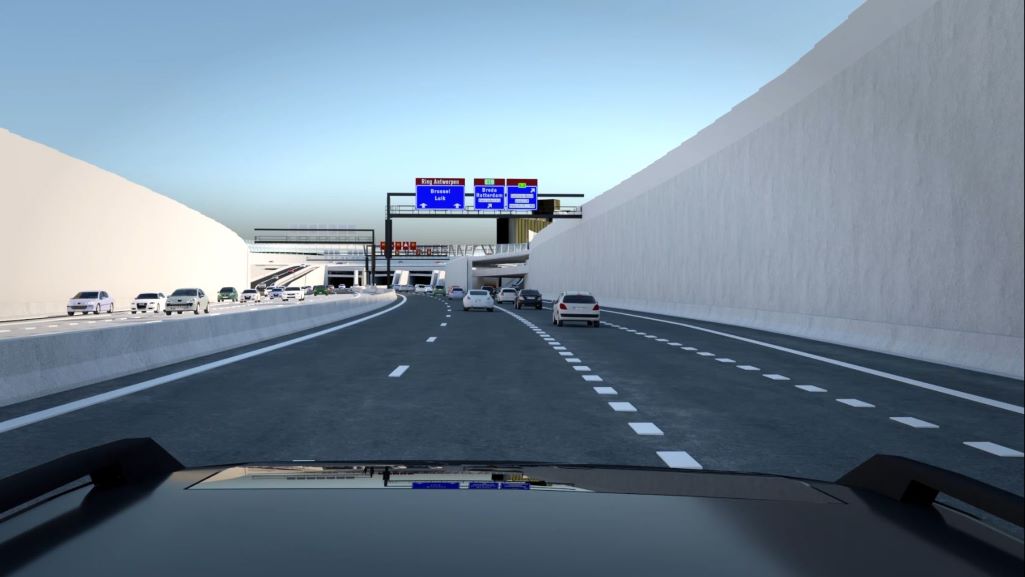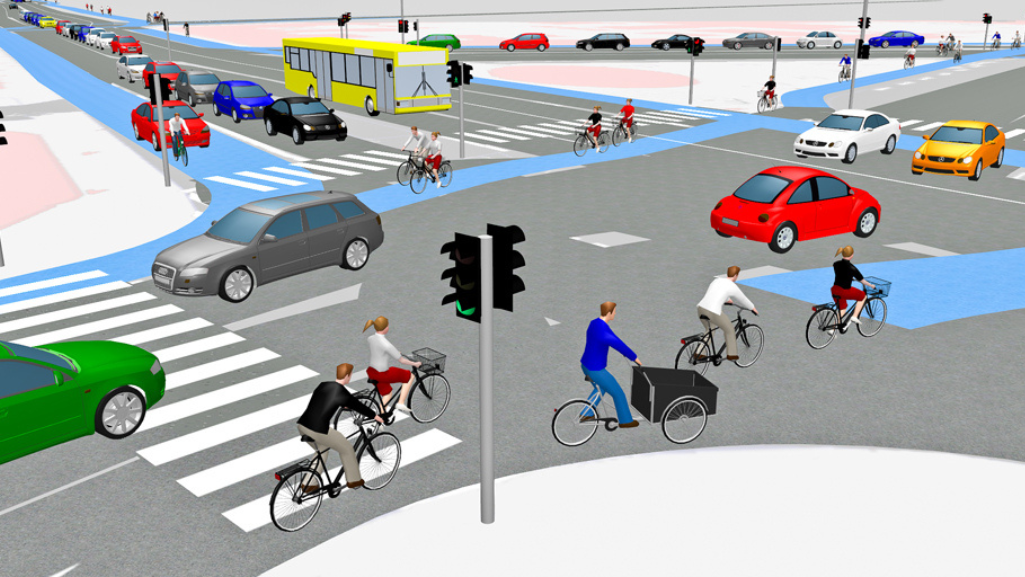Across the world, more and more cities are lowering speed limits for motorized vehicles. Most commonly, this means cars are not allowed to drive more than 30 km/h in most or all roads within city limits (20-25 mph in the United States). But what is it good for, and how can it best be planned and what are the effects of lowering speed limits?
This trend has been gathering pace recently: Paris has introduced a city-wide 30 km/h speed limit in the summer of 2021; Brussels took a similar step that year, and Spain’s Bilbao have had such a policy in place since 2018. Milan and Glasgow now consider introducing lower speed limits. And many more European cities follow suit.
In the United States, cities are also lowering speed limits – usually down to 20 or 25 miles per hour. These measures now exist in major urban areas, such as New York City, Seattle, and Portland.
The effects of lowering speed limits in cities are felt not only by vehicles and drivers. These measures affect almost everyone else living in cities. Therefore, city authorities and transportation planners must pay special attention when preparing them.
Here’s a short recap of the effects of lowering speed limits, and how cities can best prepare and implement them:
Increasing pedestrian safety
The most obvious group benefiting from the lowering of speed limits in cities are the most vulnerable road users – pedestrians and cyclists. Since speed is a key factor in fatal road accidents, vehicles which drive slower pose less of a threat. Experts estimate that 50% of people survive a hit by a vehicle driving at 50 km/h, but that this figure jumps to 90% when the car’s speed is up to 30 km/h.
Those measures may well fit in the Vision Zero policies adopted in many countries, with the aim of minimizing the number of road crush victims. In areas of Glasgow where a 20-mph speed limit is already implemented, the number of casualties from road crashes was down by 31%, police data shows.
Reducing emissions
Cities are increasingly looking for ways to reduce air pollution. Speed limitations in inter-city motorways have been proven to lower both fuel consumption and emitted pollutants. In urban areas, the exact benefits depend on a number of factors, such as vehicle fleet composition, driving patterns, frequency of speeding, congestion, and traffic diversion due to the speed limit. However, lowering speed limits can be a part of a broader strategy to reduce the number of cars on the roads, as driving in urban areas becomes less attractive.
Improving health
When it is safer for pedestrians to walk, and for cyclists to bike, the number of people performing active mobility (physical activity) increases. As a result, the overall health of residents improves and so is their quality of life.
This is ever more important in light of the Corona pandemic. For example, during the early stage of the pandemic, the Isle of Man introduced lower speed limits in order to “minimize the risk of accidents leading to bed spaces being occupied” in hospitals.
Less noise
Each of us is very well familiar with noise levels coming from motorized vehicles. According to the World Health Organization, “traffic noise alone is harmful to the health of almost every third person” in Europe.
However, research indicates that lowering speed limits to 30 km/h is highly effective in reducing noise. There is evidence that switching to electric cars will also reduce this noise, but until then, the most effective way is to enforce stricter speed limits.
Human-centered city design
Measures to lower speed limits can also be seen as part of the wider strategy of designing cities to be more human-centered. That means that the residents can move freely, without being dependent on a car, or be afraid of being run over by them.
In addition, this requires a new approach to the design of public spaces, that had long focused on ensuring that cars can get fast access. Instead, the focus is now ensuring that people, not vehicles, have optimal mobility rights: Wider sidewalks and also enforcing speed limits.
How to plan lower speed limits
Cities that aim to introduce lower speed limits cannot simply rely on their good intentions. This major step must be carefully planned, and the implementation should minimize negative effects.
Jochen Lohmiller, a Principal Product Manager at PTV Group, says: “When planning to lower speed limits in a city, the following must be considered: Safety improvements, congestion effects, change of demand because of higher travel times, coordination of signal controllers, etc. This, in order to avoid additional congestion, potential additional emissions.”
He added, that “It is ideal if a good alternative mode of transport is in place, e.g., public transport. That will support the mode shift and relives congestion risks.”
Advanced modelling software can be very helpful in this process. For example, PTV Visum is able to model the expected demand, potential mode shift and routing when lower speed limits are implemented; PTV Vissim models will help planners know the future traffic flow, the expected congestion and changes to emissions.




